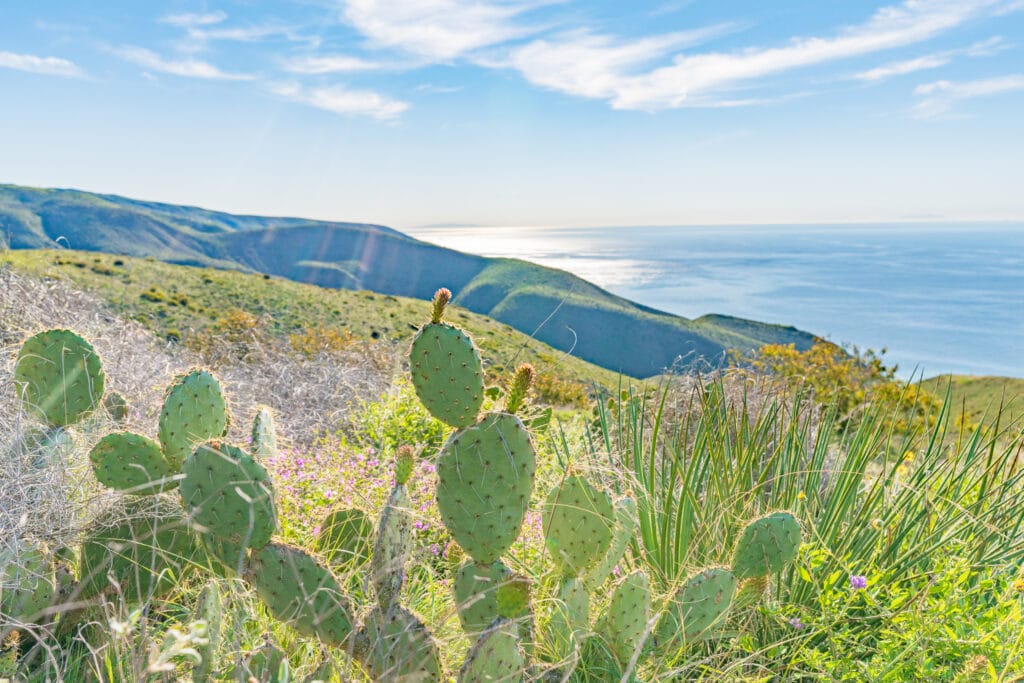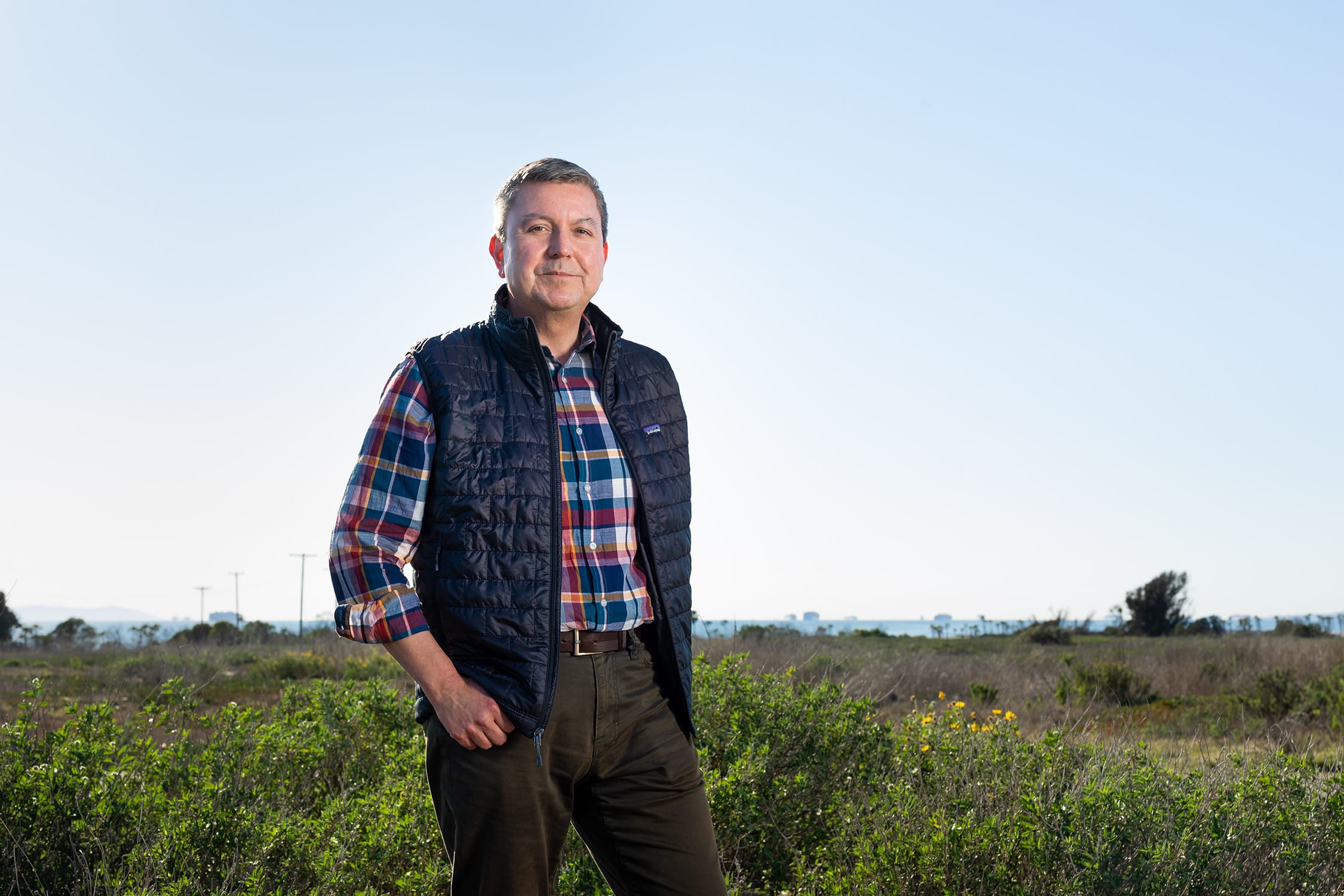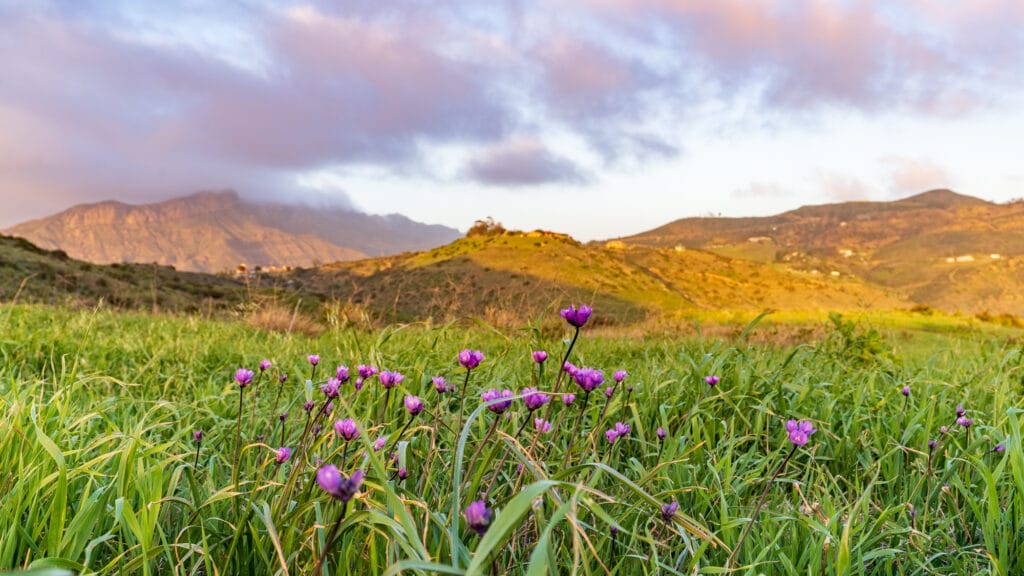Hundreds of feet above the Pacific Ocean, just 35 miles north of frenetic Los Angeles, all you hear is wind. And all you see are hillsides and ridges blanketed with coastal sage scrub, rolling down to the deep blue sea. In a word, it’s breathtaking.
It’s also exceedingly rare in Southern California. In fact, this is the largest remaining undeveloped tract of coastal land—including 2.2 miles of mega-mansion-free beachfront—between the Mexican border and Santa Barbara County. What is, perhaps, even more remarkable than the vistas and beauty of this property is the opportunity it presents for the 6 million people who live within an hour’s drive, many of whom live in communities that lack quality outdoor spaces.
This is Deer Creek Beach, a 1,241-acre property that, with help from generous donors, could soon become part of the Santa Monica Mountains National Recreation Area.
“This property has been coveted by conservation organizations for many, many years, and it has eluded so many people,” says Guillermo Rodriguez, vice president and California state director of Trust for Public Land. The land, which sits just north of the affluent community of Malibu, was owned by a private individual and eyed by commercial developers for decades; the property could have been snatched up and built on.

If not for TPL, this could have become the exclusive vista of luxury-home owners. Coastal properties like this are rare and under constant threat in California. Photo: Joe Sorrentino
“I’m standing on what could [have been] the front yard or backyard of someone’s private luxury estate, but thanks to the generous donors of Trust for Public Land and to the incredible investment of the state of California, this land is no longer for sale to private developers,” says Rodriguez. One plan called for two hotels, a golf course, a marina, and luxury homes. “But, thankfully, TPL was at the right place at the right time, and we were able to put together a complex acquisition package to purchase and protect this property. It’s an incredible, incredible find.” While TPL currently holds the property, we continue to work tirelessly with generous donors, state agency partners, and the Land and Water Conservation Fund to ensure that funds are dedicated to transfer Deer Creek into public ownership with the National Park Service by 2025.
Conservationists weren’t the only ones pushing to protect Deer Creek Beach from development. The Santa Ynez Band of Chumash Indians also advocated for its protection. “Prior to the coming of Europeans, there was a thriving culture here—a very densely populated and sophisticated network of trade and food gathering from the sea and the land,” says David Szymanski, superintendent at the Santa Monica Mountains National Recreation Area.
“The land that we stand on contains the villages, footpaths, and places that were sacred to the ancestors of the Chumash,” he continues. “We very much look forward to working with them to make sure those places are protected in perpetuity. The Chumash offer us the wisdom that comes from more than 7,000 or 8,000 years of continuous occupation on this land. To be able to work with people with that kind of depth of knowledge and connection is really a privilege.”
In addition to the significance of this project to Indigenous communities in California, the protection of Deer Creek achieves two other important things: It ensures the public will forever be able to access and enjoy hiking, backpacking, swimming, and surfing here. And its conservation preserves critical habitat—mixed chaparral, coastal sage scrub, and coastal cactus scrub—for numerous land animals, including mule deer, coyotes, bobcats, badgers and mountain lions.
Jeff Sikich, a wildlife biologist for the National Park Service, has led research on mountain lions in the Santa Monica Mountains for 20 years. The cats, which thrive in the sort of Mediterranean-type ecosystem found in Southern California, have lost much of their habitat in recent decades.

— Guillermo Rodriguez, TPL vice president and California state director
“Basically everything from lizards to lions can be found in this area,” Sikich says, gesturing to the scrubby slopes on a crystalline winter day. “Our last remaining large carnivore uses this area often. We’ve tracked many individuals through the years navigating through. So this Deer Creek property, being so large with tons of native vegetation, is really critical for our wildlife. That it is now preserved into the future is just awesome.”
One challenge facing mountain lions is the growing network of freeways in and around Los Angeles. The animals need a lot of space to roam given that they are solitary, Sikich notes. In fact, one adult male mountain lion will cover 150 square miles in search of food and mates, while an adult female covers a third of that territory. But Sikich is quick to add that humans are not on their menu, and mountain lion attacks on people are extremely rare.

The ecosystem of the Deer Creek property is the ideal habitat for mountain lions, who call this area home. Due to heavy development in Southern California, much of the lions’ habitat has been lost, so protecting this area is critical for for their survival. Photo: Joe Sorrentino
“The acquisition of the Deer Creek property will further preserve the core habitat in the Santa Monica Mountains,” Sikich says. “Through our long-term research we have seen that these mountain lions are not crossing major freeways often. So they are pretty much trapped in this island of habitat, and this has led to very low genetic diversity. It really speaks to the urgency to protect and preserve the remaining natural habitat we have.”
Opportunities for public recreation will abound once the property becomes part of the National Recreation Area. In addition to viewing wildlife on land, visitors will have the chance to see gray and humpback whales migrating just offshore.
“Projects like this are hard; they are complex,” says Rodriguez. “They take a long time. But in the end, it all comes together when you see folks hiking, when you see kids running around, when you hear laughter and joy. That’s why we do this work.”
Lisa W. Foderaro is a senior writer and researcher for Trust for Public Land. Previously, she was a reporter for the New York Times, where she covered parks and the environment.

Help Protect This Rare, Wild Playground
Trust for Public Land and National Park Foundation have launched a $30 million campaign to ensure permanent public access to Deer Creek Beach. Your support helps to connect everyone in California to the outdoors.

Donate to become a member, and you’ll receive a subscription to Land&People magazine, our biannual publication featuring exclusive, inspiring stories about our work connecting everyone to the outdoors.

